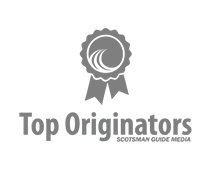
The Ultimate Guide to Working With a Lender
Application Checklist
What you need to start your application
-
-
Copy of signed sales contract including all riders
-
Verification of the deposit you placed on the home
-
Names, addresses and telephone numbers of all realtors, builders, insurance agents and attorneys involved
-
Copy of Listing Sheet and legal description if available (if the property is a condominium please provide condominium declaration, by-laws and most recent budget)
-
-
- Copies of your pay-stubs for the most recent 30-day period and year-to-date
- Copies of your W-2 forms for the past two years
- Names and addresses of all employers for the last two years
- Letter explaining any gaps in employment in the past 2 years
- Work visa or green card (copy front & back)
If self-employed or receive commission or bonus, interest/dividends, or rental income:
- Provide full tax returns for the last two years PLUS year-to-date Profit and Loss statement (please provide complete tax return including attached schedules and statements. If you have filed an extension, please supply a copy of the extension.)
- K-1’s for all partnerships and S-Corporations for the last two years (please double-check your return. Most K-1’s are not attached to the 1040.)
- Completed and signed Federal Partnership (1065) and/or Corporate Income Tax Returns (1120) including all schedules, statements and addenda for the last two years. (Required only if your ownership position is 25% or greater.)
If you will use Alimony or Child Support to qualify:
- Provide divorce decree/court order stating amount, as well as, proof of receipt of funds for last year
If you receive Social Security income, Disability or VA benefits:
- Provide award letter from agency or organization
-
- Sale of your existing home – provide a copy of the signed sales contract on your current residence and statement or listing agreement if unsold (at closing, you must also provide a settlement/Closing Statement)
- Savings, checking or money market funds – provide copies of bank statements for the last 3 months
- Stocks and bonds – provide copies of your statement from your broker or copies of certificates
- Gifts – If part of your cash to close, provide Gift Affidavit and proof of receipt of funds
- Based on information appearing on your application and/or your credit report, you may be required to submit additional documentation
-
- Prepare a list of all names, addresses, account numbers, balances, and monthly payments for all current debts with copies of the last three monthly statements
- Include all names, addresses, account numbers, balances, and monthly payments for mortgage holders and/or landlords for the last two years
- If you are paying alimony or child support, include marital settlement/court order stating the terms of the obligation
- Check to cover Application Fee(s)
Mortgage Glossary
Mortgage terms to help understand the process better
- A -
-
Unlike a fixed rate mortgage, an adjustable rate mortgage has an interest rate that changes throughout the length of the loan. The interest rate either increases or decreases, depending on market indexes.
-
The date on which the interest rate changes for an adjustable rate mortgage (ARM).
-
The paying down of principal over time. In a typical mortgage loan, the principal is scheduled to be paid off, or fully amortized, over the term of the loan.
-
The annual cost of a loan, expressed as a yearly rate. APR takes into account interest, discount points, lender fees and mortgage insurance, so it will be slightly higher than the interest rate on the loan.
-
The total value of your property. This number is usually used for taxes.
- B -
-
The party that receives funds in the form of a loan with the obligation of repaying the loan in full with interest, if applicable. A borrower is also referred to as a mortgagor.
- C -
-
A mortgage loan whose proceeds are distributed for debt consolidation, cash-in-hand, payoff of non-seasoned closed-end subordinate mortgages and payoff of lines of credit with cash advances in the past 12 months.
-
The official act of transferring homeownership (and all associated titles, deeds, and paperwork) from the seller to the buyer. Both buyer and seller normally have to pay closing costs at this time.
-
Describes any borrower other than the primary borrower.
-
Assets that are pledged as security for the loan’s repayment—normally the house and the property that are listed on the mortgage.
-
A mortgage that isn’t insured by the FHA or guaranteed by the VA. These loans are harder to get because qualification is based on the buyer’s credit history.
-
Credit score evaluates and considers only the information in a borrower’s file at a credit reporting agency. As an index, the score reflects the relative risk of serious delinquency, default, foreclosure or bankruptcy associated with a borrower.
- D -
-
The percentage of a consumer’s monthly gross income that goes toward paying debts, commonly referred to as DTI.
-
A term used to describe a borrower who doesn’t uphold the agreement with the lender, normally by failing to keep up with punctual payments. After 90 days of breaking the contract, the borrower is considered to be in default.
-
When a borrower is more than 30 days late making a payment.
- E -
-
The portion that the borrower owns of the home. Calculate this by subtracting the unpaid loan balance from the value of the home.
-
All funds collected by seller and/or designated servicer to cover expenses of the borrower required to be paid under the security instrument, including, but not limited to, taxes, special assessments, ground rents, water, sewer and other governmental impositions or charges that are or may become liens on the mortgaged property prior to that of the mortgage loan, as well as hazard, flood, and mortgage insurance premiums.
- F -
-
The government sponsored enterprise formerly known as Federal National Mortgage Association, or any successor thereto.
-
An independent agency created by the Congress to maintain stability and public confidence in the nation’s financial system by insuring deposits, examining and supervising financial institutions for safety and soundness and consumer protection, and managing receiverships.
-
The Federal Housing Administration (FHA) does not actually lend money, but it does insure loans that are made by private lenders. This insurance gives the lenders the opportunity to offer mortgages with more favorable terms and interest rates. Many people who can’t obtain conventional loans can get one through one of the FHA’s programs. The FHA is part of HUD.
-
Any mortgage loan subject to an insurance policy granted by the FHA, and is eligible for reimbursement under the insurance policy.
-
Unlike an adjustable rate mortgage, a fixed rate mortgage has an interest rate that is agreed upon at initiation of the loan and never changes over the life of the loan. This also means the principal and interest payment is fixed and will not change over the life of the loan.
-
Insurance that compensates the property owner for physical property damage resulting from flooding. Flood insurance is required if the property improvements are located in federally designated Special Flood Hazard Areas. If the land is in the flood hazard area, but the improvements are not, flood insurance is not required.
-
If the borrower defaults, the lender can repossess the home. Foreclosing is a legal procedure where the borrower forfeits all rights to the home and property.
-
The government sponsored enterprise formerly known as the Federal Home Loan Mortgage Corporation, or any successor thereto.
- G -
-
The grantee is the person buying the real estate.
-
The grantor is the person selling the real estate.
-
An individual’s total earnings before any taxes or deductions are paid.
- H -
-
Insurance coverage that compensates for physical damage – by fire, wind, or other natural disasters – to the property.
-
An owners group that manages common areas whether in a PUD, condominium, or single family subdivision that establishes general guidelines for the operation of the community, as well as its standards.
-
Also known as “hazard insurance,” homeowner’s insurance compensates the homeowner if their real estate is damaged due to theft, fire, or other dangers. It often covers the entire value of the home.
-
Housing and Urban Development (HUD) is a government agency that manages federal housing and several different programs dedicated to urban development. The FHA is a part of HUD.
- I -
-
To protect both the lender and the borrower, many mortgages have an interest rate cap. The cap is a safeguard built into ARMs; it lists the highest and the lowest percentage of interest that can be charged.
- L -
-
To encourage punctual payments, many lenders charge a late penalty if the borrower makes a tardy payment.
-
When a borrower applies for a loan, it is submitted to the underwriters. The underwriters consider the potential borrower’s credit and financial history, and then they decide if lending to that borrower is a wise choice.
-
In a mortgage loan, the amount borrowed relative to the value of the property. An LTV of 80% means that the mortgage loan is for 80% of the value of the property, with the borrower making a 20% downpayment.
- M -
-
Not to be confused with the assessment (the total value of the property), the property’s market value is the highest price a buyer would pay and the lowest price the seller would sell for.
-
The person lending the money for the mortgage.
-
Mortgage insurance is insurance needed for mortgages with low down payments, usually less than 20% of the price of the home.
-
A monthly payment, usually part of the mortgage payment, paid by a borrower for mortgage insurance.
-
The person borrowing the money for the mortgage.
- N -
-
Also called “take-home pay.” This part of income already has taxes, insurance, social security, and any other necessary payments subtracted. This is most commonly used when lenders are making an FHA or a VA loan.
-
A refinance transaction in which the amount of money from the new loan is used to repay the existing first mortgage, to pay closing costs, point, prepayment penalties, and any seasoned subordinate mortgage liens. Incidental cash back may not exceed the lesser of 2% of the principal amount of the new mortgage or $2,000. Also referred to as a rate and term refinance.
- P -
-
Most monthly housing payments cover the costs for PITI (Principle, Interest, Taxes, and Insurance).
-
When paying for a mortgage, it’s important to stay on schedule. Just as you’re penalized for paying too late, you may also be fined for paying more than you’re supposed to or finishing the loan earlier than scheduled. This is not a common practice.
-
If more than one person is obligated to repay the mortgage loan, the primary borrower is considered to be the individual whose credit score is selected for grading and qualification purposes.
-
The amount of money borrowed for the mortgage.
-
Many borrowers are required to pay for PMI. It is generally needed for mortgages with low down payments, usually less than 20%.
- T -
-
Legal documents that state who has ownership of a property.
- U -
-
Underwriters review a borrower’s credit and financial situation and any property appraisals, and then they assess the amount of risk. If they deem the borrower trustworthy and assess it as a good fit, they give the final approval.
- V -
-
The Veteran’s Administration (VA) supports service members, veterans, and eligible spouses in purchasing, renovating, and building homes. While the VA does not lend money, they do guarantee loans so that the private lender can offer more favorable terms.
-
A mortgage guaranteed by the Department of Veterans Affairs (VA).

Your Homeownership Journey Starts Here
Find Your Mortgage Consultant























.png)





















